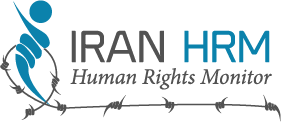Azam Attarzadeh was born in 1961 in Boroujerd, in western Lorestan Province. Her friends know her as Shahrbanoo.
She continued her high school education until graduation, and then worked in a cultural-educational center where she became acquainted with the People’s Mojahedin Organization of Iran (PMOI/MEK).
She was arrested on September 8, 1981, for propaganda activities against Khomeini. She spent seven years behind bars.
Prison officials tortured Azam to cooperate with them. They pressured her by transferring her into solitary confinement.
One of her fellow prisoners said, “Shahrbanoo’s cell was next to mine in Gohardasht prison in 1987. We communicated through Morse code. We woke up in the morning. After sports, we exchanged news and sometimes discussed various social and political issues. She had deep thoughts and clear positions, and she had the most accurate analysis of the situation.”
Another prisoner wrote about Azam, “On her spine was a tumor causing her severe pain. Prison guards know that and when they wanted to pressure Azam, they inflicted relentless blows to her spine. I witnessed this once.”
Azam Attarzadeh’s sentence ended on September 8, 1988. As her family was preparing for her release, the regime was busy with the massacre of 30,000 political prisoners.
Prison officials in Evin Prison hanged Azam, only 27, even though she was due to be released.
About two or three months later, prison officials told the family to come and get their daughter’s belongings.
The authorities cruelly denied them a body to mourn over, and the truth about when, how, and why their daughter was killed.
During the 1988 massacre, the Iranian authorities extrajudicially executed thousands of prisoners for their political opinions and dumped their bodies in unmarked individual and mass graves.
Since then, the authorities have tormented the relatives by refusing to tell them when, how and why their loved ones were killed and by keeping their remains hidden.
A Crime Against Humanity
The Facts
- In 1988, the Iranian regime massacred 30,000 political prisoners.
- The executions took place based on a fatwa by Supreme Leader Khomeini.
- Three-member commissions known as ‘Death Commissions’ were formed across Iran sending political prisoners who refused to abandon their beliefs to execution.
- The victims were buried in secret mass graves.
- The perpetrators continue to enjoy impunity.
- Since 2016, the names of nearly 100 ‘Death Commission’ members have been revealed. Many still hold senior positions in the Iranian judiciary or government.
The Human Rights Council needs to conduct an international investigation into the 1988 massacre. This would be the first step to end the impunity for the officials, agents and those who ordered the largest political crime of the century.
Khamenei and other leaders of the regime need to be prosecuted and face justice for committing crimes against humanity.











